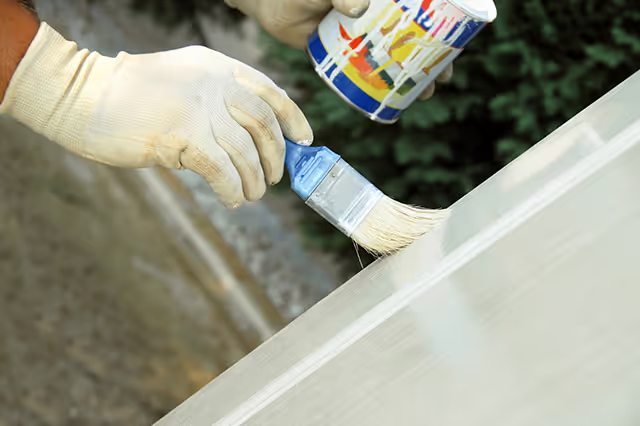Whether you’ve recently purchased a charming period home or simply want to enhance your property’s curb appeal by giving your front door a fresh coat of paint, you can’t proceed with this home makeover project without knowing how to properly prep the door’s surface.In this blog, we’ll teach you how to remove paint from wood like a pro. There are many techniques on how to strip paint, however, not all ways are safe for the wood. For example, vintage doors with ornate carvings need specific products and materials so as to not damage the frame. Before proceeding keep in mind these safety precautions:
Safety Tips When Stripping Paint
- Wear comfortable clothes that are preferably old, ones you won’t mind getting messy with paint spills.
- Wear protective gloves for your hands and a face mask to cover your nose and mouth. Chemical paint strippers release harmful toxic fumes, which could cause side effects after prolonged exposure.
- Work outdoors or in a well-ventilated area to lessen the risks of inhaling fumes from solvents and chemicals.
- Cover your work area with old newspapers, a tarp, or drop sheet for easy cleanup and to minimize the risk of ruining floors.

Check for Lead Content
Checking for lead content in paint is an essential step when stripping it from wood. This is particularly important for the majority of period homes built between 1940 and 1960 (when the toxic metal was officially banned in Canada). If you are concerned about potential lead exposure in your home, there are many ways to check it.
- You can purchase a DIY lead-testing kit. Make a V-shaped cut through all the layers of paint, brush the groove and do a swab test. If it turns a bright red colour, it’s a clear indication that lead is present.
- Send it to a lab for testing.Lab testing is a more reliable option than swab testing as it can give you definitive results in two weeks. You would have to strip paint from the wooden door and send the samples to the lab.
- Hire a pro. If you live in an older home, it’s best to contact a licensed lead inspector who can conduct an X-ray fluorescence test and thorough inspection on all the painted surfaces in your entire home, just to be safe.
The 3 Steps on How to Remove Paint From Wood
1. Sanding
Ideally, the use of hand-sanding should be limited to smaller projects. Power sanding disks and clapboard sanders can be used to grind away paint as well, however, this method involves a considerable amount of dust and is not recommended for removing paint from wood doors that have not been tested for lead content or for indoor work. Whether you are sanding by hand or with a machine, one must be careful when using this technique to strip away paint as it poses a higher risk of damaging the wood, and therefore not a viable option for vintage wooden doors with elaborate carvings.
2. Electric Hot Air Gun
An electric hot air gun can be an efficient and time-saving method of removing paint from wood. Unlike sanding, there’s no dust to deal with. However, there’s exposure to fumes from heated paint and if you are not careful, you may run the risk of charring the wood. An electric hot air gun only works as a paint remover. It does not work as well with varnish, which can melt and become glue-like when exposed to heat.

3. Chemical Stripping
If you ask experts about what is the best technique on how to remove paint from wood doors, most of them would probably have the same answer: chemical strippers. Chemical paint removers can be made of liquid, gel, or paste that dissolves paint. The process may be painstakingly slow but they don’t have any of the drawbacks like dust, paint chips, or burning the wood. They are suitable for stripping away paint from wood surfaces with fine details, awkward shapes, and hard-to-reach spots you’ll probably have difficulty with if using an electric hot air gun. Chemical paint strippers work for varnishes, too.Two main types of chemical paint strippers are:
- Solvent-based paint removers: They can strip paint from wood gently and because of this, are commonly used on antiques with wooden surfaces. They can strip away paint without discolouring the wood and cleans the wood deeper down into the grain. If you want to bring out the natural beauty of the wood, using a solvent paint remover is the best way to go.Some disadvantages to using a solvent-based paint remover is that they can get costly with larger jobs. They should only be used outdoors or in a well-ventilated area due to its overpowering strong chemical odour and because they can be a bit messy.
- Caustic paint removers: Cheaper in comparison to solvent-based paint strippers, they work best on thick paint, varnish buildups, and complicated mouldings. In addition, they give off considerably fewer fumes than solvent. The downside with caustic paint removers is that they can have a potent alkaline property, which can stain or scorch dense types of wooden doors, such as those made of mahogany and old oak.
Let Us Know!
We hope this blog has taught you everything you need to know on how to remove paint from wood doors! For more information, read our blogs to learn the difference between wood and vinyl doors or if you want to get tips on how to find the perfect front door for your home.If you have any questions about how to remove paint from wood doors, please contact us today!








